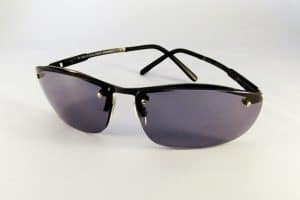Your trusty non-prescription glasses have been by your side through countless activities. They shield your eyes from the sun’s glare, accompany you during long hours in front of screens, and even accessorise your look flawlessly. But what happens when wear and tear starts to show? Can these non-prescription glasses be reglazed, granting them a renewed lease on life? Let’s delve into reglazing and its potential for non-prescription eyewear.
It’s incredible how non-prescription glasses become a part of our daily routines, shielding our eyes from the sun’s harsh glare or providing us with a clear view as we spend long hours in front of screens. These stylish frames often become an essential accessory, seamlessly integrating into our fashion choices. Yet, as time passes, wear and tear inevitably take their toll. So, the question arises: can these non-prescription glasses undergo reglazing, breathing new life into them? Let’s journey into the world of reglazing and explore its possibilities for non-prescription eyewear.
Understanding the Reglazing Process
Reglazing, at its core, involves the art of rejuvenating your eyewear by swapping out worn-out lenses for fresh ones. This transformative process breathes new life into your beloved frames, reinstating both functionality and aesthetic appeal. Often associated with prescription lenses, reglazing extends its prowess to non-prescription glasses, presenting an opportunity for a much-needed makeover. The essence of the process lies in preserving your existing frames while outfitting them with customised lenses that suit your exact specifications and needs.
Differentiating Prescription and Non-Prescription Reglazing
When it comes to reglazing, distinguishing between prescription and non-prescription glasses is pivotal due to the inherent variance in lens complexity. Non-prescription glasses predominantly feature single-vision lenses, renowned for their simplicity in replacement. Conversely, prescription glasses might incorporate multifocal or varifocal lenses, which boast intricate designs tailored to address specific vision needs. This fundamental contrast significantly influences the reglazing process. The straightforward nature of single-vision lenses found in non-prescription glasses often translates into a smoother and more cost-effective reglazing procedure.
Factors Influencing Reglazing Suitability for Non-Prescription Glasses
Examination of Non-Prescription Lens Types and Materials
Non-prescription lenses encompass a spectrum of materials and tints, catering to varied purposes. These lenses come with diverse material compositions, ranging from standard plastics to specialised polymers designed for specific functionalities. Tints on these lenses serve multifaceted roles: some offer UV protection, shielding the eyes from harmful rays, while others target blue light filtration, reducing digital eye strain. Additionally, certain lenses are purely aesthetic, aiming to enhance the visual appeal without any functional modifications. Understanding the nuances of these lens types and materials is pivotal in assessing their compatibility with the reglazing process.
Compatibility of Non-Prescription Frames with Reglazing
The architecture and composition of non-prescription frames wield significant influence in determining their compatibility with reglazing procedures. Frames exhibit diverse designs and construction, and this variability impacts their adaptability to different lens options and thicknesses. Some frames may lack the structural support necessary for accommodating specific types of lenses, thereby restricting the reglazing possibilities. This limitation can stem from the frame’s design intricacies, such as shape, material, or construction method, posing challenges when attempting to integrate new lenses.
Limitations and Considerations for Reglazing Non-Prescription Eyewear
When exploring the suitability of reglazing for non-prescription glasses, there are several critical factors to consider. Firstly, the examination of the varied lens types and materials used in non-prescription glasses is essential. These lenses come in different forms, from UV-protective tints to those specialised in filtering blue light, each with its unique properties. Assessing these characteristics is crucial in determining whether they are compatible with the reglazing process.
The frames themselves also play a pivotal role. The design and construction of non-prescription frames can determine their compatibility with reglazing. Some frames may not support certain lens options or thicknesses, which can limit the possibilities for reglazing.
Moreover, limitations and considerations in reglazing non-prescription eyewear should be acknowledged. Attempting to fit specific lens types or materials into existing frames may pose challenges. Factors such as frame shape, size, and curvature can significantly influence the feasibility of reglazing.
However, despite these limitations, there are several advantages to reglazing non-prescription glasses. Firstly, it’s a cost-effective alternative to buying new eyewear, making it budget-friendly. Additionally, reglazing is environmentally friendly as it extends the lifespan of existing frames, reducing the need for new materials and contributing to sustainability efforts. Retaining familiar frames, whether due to sentimental value or a perfect fit, is another significant advantage. Reglazing also contributes to reducing waste by actively participating in minimising discarded frames. Lastly, there’s the potential for customisation through reglazing, allowing for the exploration of different lens options and tints, thereby providing a personalised touch to your eyewear.
Conclusion
In the world of eyewear, reglazing non-prescription glasses emerges as a feasible and compelling choice. Understanding lens types, frame compatibility, and potential limitations is crucial before diving into this transformative journey. Reglazing 4 U specialises in this service, offering high-quality materials and scratch-resistant lenses, ensuring your eyewear receives top-notch treatment.
With a spectrum of lens options—single vision, bifocal, varifocal, glass, and sunglasses—our services cater to diverse needs. Our expertise extends to reglazing Oakley and wrap-style frames, ensuring a seamless fit and finish.
At Reglaze 4 U, we prioritize customer satisfaction. Contact us at 0161 511 2461 or info@reglaze4u.com to explore our reglazing services and experience tailored, premium customer service. Reglaze your non-prescription glasses with us today and receive a complimentary pack of perfectly fitted lens options!
Choose to revive your eyewear consciously and sustainably. Embrace reglazing to extend the life of your frames, reduce waste, and make eco-conscious decisions without compromising on style or functionality. Your frames deserve a second chance, and we’re here to make it happen!





